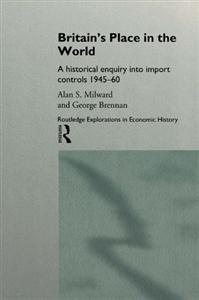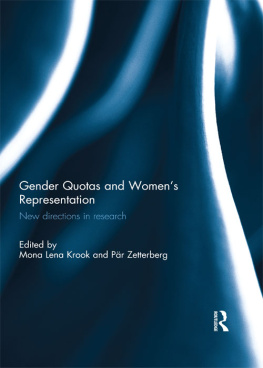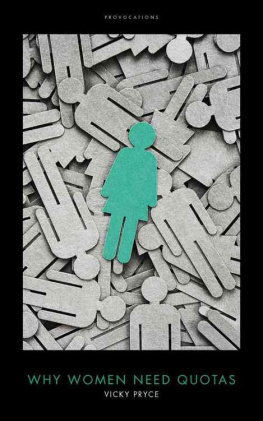CONTENTS
Figures | vii |
Tables | viii |
Acknowledgements | x |
Archival References | xi |
Introduction | xiii |
| A PERSPECTIVE ON BRITISH IMPORT CONTROLS | |
| QUANTITATIVE IMPORT RESTRICTIONS AND |
THE MODERN STATE | |
| BRITISH COMMERCIAL POLICY AND THE OEEC |
TRADE LIBERALISATION PROGRAMME, 1949-51 | |
| TAKING THE LEAD IN EUROPE |
The international politics of import controls, 1952-6 | |
| MEASURING THE EFFECTS OF QUANTITATIVE |
IMPORT RESTRICTIONS | |
| THE EFFECT OF IMPORT CONTROLS ON |
BRITISH MANUFACTURING Appendix I Examination of Scotts calculations of the value of imports of food and raw materials excluded by quantitative restrictions, | |
1946-9 | |
Appendix II | Cordens estimate of import savings in the year 1952 attributable to emergency |
quantitative controls imposed in November 1951 and March 1952, and our estimate |
of total savings for the year 1953 | |
Appendix III | Government estimate of the probable value of additional imports in 1954 in |
the absence of quantitative restrictions | |
Appendix IV | A survey of the operation of import quotas and other import restriction regimes on United Kingdom |
manufacturing | |
Notes | |
Bibliography | |
Bibliography | of Official Sources | |
Index | |
THE EFFECT OF IMPORT CONTROLS ON BRITISH MANUFACTURING
THE MOTIVES OF NON-TARIFF PROTECTION FOR INDUSTRY
By imposing tariffs, which needed to be legislated, negotiated and promulgated, governments had usually been able to lower the quantity of importsbut not in the face of aggressively reduced import prices and never to an amount which was exactly predictable. Quotas, unlegislated and often unpublished, enabled post-war government ministries to maintain elaborate and detailed Import Programmes, that is to say, to plan their trade. After shipping space had become once more available on an open market in 1946 the official objective of these programmes was to save scarce currencies, particularly dollars. But their effect was to protect British industry from post-war competition, especially against competition of more capital-intensive industries elsewhere in the west and labour-intensive industries in Asia. Much of the modern science-based industry of the United Kingdom can be said to owe its birth to such protection, while some older industries like jute manufactures owed their longevity to it. Imports of those goods which would give rise to substantial readjustment in UK industry are still very strictly limited1 the Mutual Aid Committee was told as late as September 1955.
Although the pattern of British industry in the post-war decade was substantially affected by these import programmes, they represented planned trade without a plan. A subcommittee on the contribution of science to productivity growth, set up by the Labour government, did have an Imports Substitution Panel as one of its four panels, and this survived until 1967. However, its activities were limited to a few explorations of alternative raw material sources.2 It seems more probable that where such substitutions took place they were the outcome of the import controls themselves rather than committees. Some elements of a long-term industrial strategy did exist: the post-war Development Areas; the great oil refinery programme of 1948-51; the activities of the National Research and Development Corporation. All of these elements were in place before
1951 and were directly or indirectly fortified by quantitative restriction on imports. But the effect of import quotas on the pattern of industry, though large, was an aggregation of special cases.
The public justification for import controls, especially in international organisations, was that they were imposed primarily for currency saving purposes. While this was indeed the general mainspring of the policy, there are many cases where the primary motivation would be more truly described as industrial policy, as well as a large number where the various impulses were so intertwined that it would be misleading to attribute a priority among them.
When, for example, in 1951 the Board of Trades Working Party on Import Licensing Relaxations considered the quotas which protected the herring canning industry they were faced with the plausible argument from the Ministry of Agriculture and Fisheries that this was a straightforward case of the need to protect the domestic market of an industry which earned foreign currency. About half the industrys output was exported, and although the return on these exports was small the export drive, it was argued, demanded protection. But in fact other issues were also at stake. All herring surpluses had to be bought by the Herring Industry Board for fish oil or fish meal manufacture at a subsidised price. Imports of cheaper herring for personal consumption from Norway or The Netherlands would have indirectly increased government outlay on subsidised state purchasing because the British catch would not have shrunk. Eliminating state purchasing would have brought liberalisers into conflict with regional employment policy. Two-thirds of the herring canning industry was located in remote north-eastern Scotland which by the standards of the early 1950s had low employment. Had a sterner view of that problem been. taken, as might have been the case in the 1980s, and migration been suggested as the answer, this would only have produced in the 1950s the riposte that the navy relied on the herring fleet for ships and men, so that ultimately the United Kingdoms small herring canning industry should be protected as an industry of strategic value.
This was a small industry, but it is cited here to show how complicated it can be to decide what the dominant reason for any import quota actually was. In the circumstances where the most acceptable international defence of an import quota was that it protected the balance of payments until a payments equilibrium had been restored, this was the argument that was made in international organisations like the OEEC whenever it could be made to stand up. However, although import programmes and quotas fell well short of economic planning, they were closely related not only to the disparate elements of post-1945 industrial strategy, but also to regional employment policy and to strategic defence considerations. While, as the Bilateral Trade Negotiations Committee had to acknowledge in early 1953, it was not the Governments policy to use import quota restriction for the protection of Domestic Industry, the reality by that date was that, Nevertheless, the pattern of production in the United Kingdom had been affected by a dozen years of quota restrictions and industry had benefited from the protection they afforded.3
In the case of industries protected by quantitative controls primarily against North American producers, for example, it is evident that one purpose of such restrictions, freely admitted in internal discussion, was the protection of several of the more important modern technologies as infant industries. The term modern applied also in this regard to new developments within existing industries. This was true, for example, of chemicals, especially petroleum chemicals, plastics and pharmaceuticals. It was true also of much capital equipment, especially agricultural and excavating machinery, office machinery and electronics. Because the retention of quotas against North American exports did not demand the same process of international justification within the OEEC as quotas against western European exports, there was less pressure to present every case publicly as a temporary measure to protect the balance of payments and a greater willingness to admit candidly to other motives, particularly those involving industrial policy. By contrast, where quantitative restrictions were particularly aimed against western European exports, it is noticeable that the argument for retaining quotas was, wherever possible, made to refer to the balance of payments or to the sometimes arcane calculation of results in the OEEC Trade Liberalisation Index.
Next page







